I hope this will be an interesting journey. Grab some tea or coffee and we'll begin.
It is fairly easy to determine the feeders necessary for the brass Hendryx cages. The "R" Opal cup, according to the Hendryx catalogs, (which we refer to as the "T" feeder), is listed as one of three feeders for the brass cages in the 1891 and 1895 catalogs.
The bars of the cage are very specific for these types of feeders. The round cages, with and without the seed guards, have the inward leaning squared-off wires for these feeders. The open or closed opal cups are more delicate than the "R" Opal cups and tend to be on most of the brass cages in the 1891 and 1895 catalogs.
Small globe cage with "R" Opal cups
Large globe cage with "R" Opal cups
As a footnote, this plate glass, at the base of the hoop, is 1/4" thick and 8" in diameter. The fun thing about this stand is that the screw top that holds the glass plate on, and the screw in front of the hoop that makes the stand adjustable both are inscribed with the Hendryx name!
As time progressed, seed guards were introduced and the feeder openings changed, but the "R" Opal cup was still the feeder being used.
The 1910 catalog is the first evidence of the oval opal (milk) glass cup that is familiar to us. The 7000 series of "New Style Special Brass Cages", with and without seed guard, had the opal glass oval cups (No. 1907 cup in the catalog). [I am unable to determine if this cup appeared earlier than this as I have a 6-yr gap in my trade catalogs. It is not offered in the 1904 catalog.]

To secure this feeder, the attachment nub is inserted in the round feeder opening and drawn downward until it rests on the cross bars below. The mouth opening on the feeder aligns with the brass wire round mouth opening.

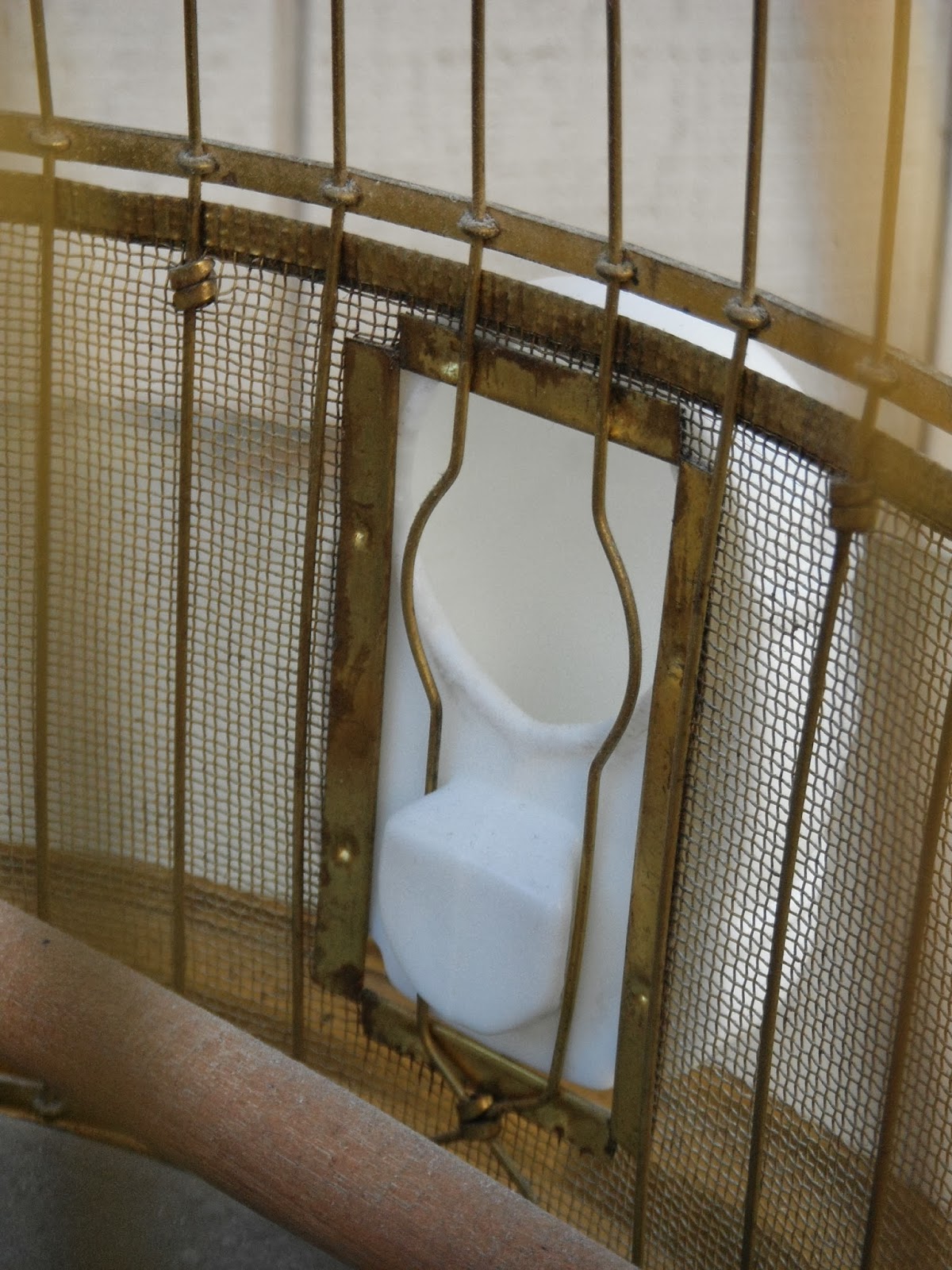


[I have a 16-yr gap in trade catalogs-1910-1926. I am unable to determine when the oval opal cup became more prolific after being introduced in 1910. It is quite popular in the 1926 catalog. The "R" opal cup is renamed the "Single Point Cup" and is used frequently also.]
The discussion about Hendryx brass cages is not complete without including the Mission and the Cottage Cages. I will be talking more in-depth about them in a later post. I believe these are the "under-appreciated" cages made by The Andrew B. Hendryx Co. These were patented on September 29, 1908.
 |
In the 1910 catalog, the Mission cages utilized the porcelain cup as the feeders.
The No. 600 Brass Cup Guard is for the cages that use the No. 1913 open opal cup.
There is a subtle difference between the 600 Brass cup guard and this one.
Don't you just love the crimped wires on this cage?
The 1926 catalog advertises the DuPont Duco finishes for cages, stands and feeders. Cages and stands were painted the same colors, offering monochrome or multicolored. Some examples are Meadow green, green and black, black and red, 2-tone green or blue. Feeders were the same or complimentary colors.
Here are several pages from the 1926 Hendryx catalog to show you some of the colors available. This program does not accept scans, only photos. I photographed the scan that Lauri at Winterthur Library sent me. It's not as good as the scans, but it'll show you what I am talking about.
Here are several pages from the 1926 Hendryx catalog to show you some of the colors available. This program does not accept scans, only photos. I photographed the scan that Lauri at Winterthur Library sent me. It's not as good as the scans, but it'll show you what I am talking about.
 |
| Courtesy, The Winterthur Library, Printed Books & Periodical Collection |
 |
| Courtesy, The Winterthur Library, Printed Books & Periodical Collection |
The 1930 catalog showed a variety of changes in the bird cage community. I will have a future blog entry on primarily the 1926 and 1930 cages and the changes they reflected.
The bird cage maker, George R. Osborn appears to be working for The Andrew B. Hendryx Co. as reflected in the 1930 catalog. There are several cages named after Osborn, and his influence can be seen in some of the feeders advertised.
This is the Osborn feeder. Hendryx sold one similar as the No. B opal cup. This feeder was used on the larger cages: Brass Cardinal Cage, the Aviary Cage, the Brass Breeding Cage, and the Osborn Parrot Cage. It is significantly larger than other feeders as it stands over 3" tall at the front and 2 1/2" at the cup edges. .
Patent # 171,309 was awarded to George R. Osborn and B. A. Drayton on Dec. 21, 1875. This was for the double pointed feeder that slips between the brass bars and can fit anywhere on the cage. The patent states that this is an "economical and effective feeding apparatus for the cheaper grades of cages."
The A. B. Hendryx Co. sold these with its own label as Opal Double Point Cups.
This one is unlabeled so it's unknown who the manufacturer is.
This is the Hendryx No. N, Opal Shield Cup. I recently purchased several Osborn feeders that have the same shape.
The Hendryx inventors/designers saw the appeal and usefulness of using Pyralin for feeders: unbreakable, lightweight, washable.
More on this in a later blog entry.
Look at the way the feeders set off the color accents of the cage. This cage was designed by Andrew B. Hendryx's son, Nathan. In the 1930 catalog,it's patent is pending as is the patent on the feeders.

There are other feeders that were used by The Andrew B. Hendryx Co. for the brass cages.
These have an interesting soft "plastic" feel which 'gives' when squeezed. It feels like the Pillsbury Dough Boy dolls when they came out. I don't know what year these were developed but it would have been after 1930.
These are large flint glass feeders that are used in the larger breeding cages.

These are the Art Deco Hendryx feeders. They have reinforced mouth openings. These were made after 1930 as they are not in the 1930 catalog.

This is the innovative Crystal Fountain patented on Sept. 4, 1917. It is a glass globe that rests in a nickel trough. It is advertised that the "water is always fresh" and attaches to any regular-spaced cage from the outside.
This is the Otto Lindemann & Co. Tulip Cup. The 1930 Hendryx catalog offers a feeder like this labeled as No. O Opal Glass Cup.
I started this entry with the intention of talking about the brass cages by The Andrew B. Hendryx Co. and their associated feeders. I did not realize that it would be such a long and exhaustive study. I included quite a few photographs. I believe that a picture is more effective than many of my words and can further enlighten you in this study.
As always, I want to thank you for your attention and interest in this entry. I would appreciate your comments and thoughts regarding anything I have touched on here. If you find places I am in error, please enter a comment and let me learn also. If you have photos of other Hendryx feeders that you have, I would be interested in seeing them. Please send the photos to tweetthings53@gmail.com. I will post them as a guest contribution. Also, if you have other Hendryx feeders that I have not pictured or talked about here, and they are for sale...contact me!!!
Have a blessed day, and 'happy hunting'.
Barbara




























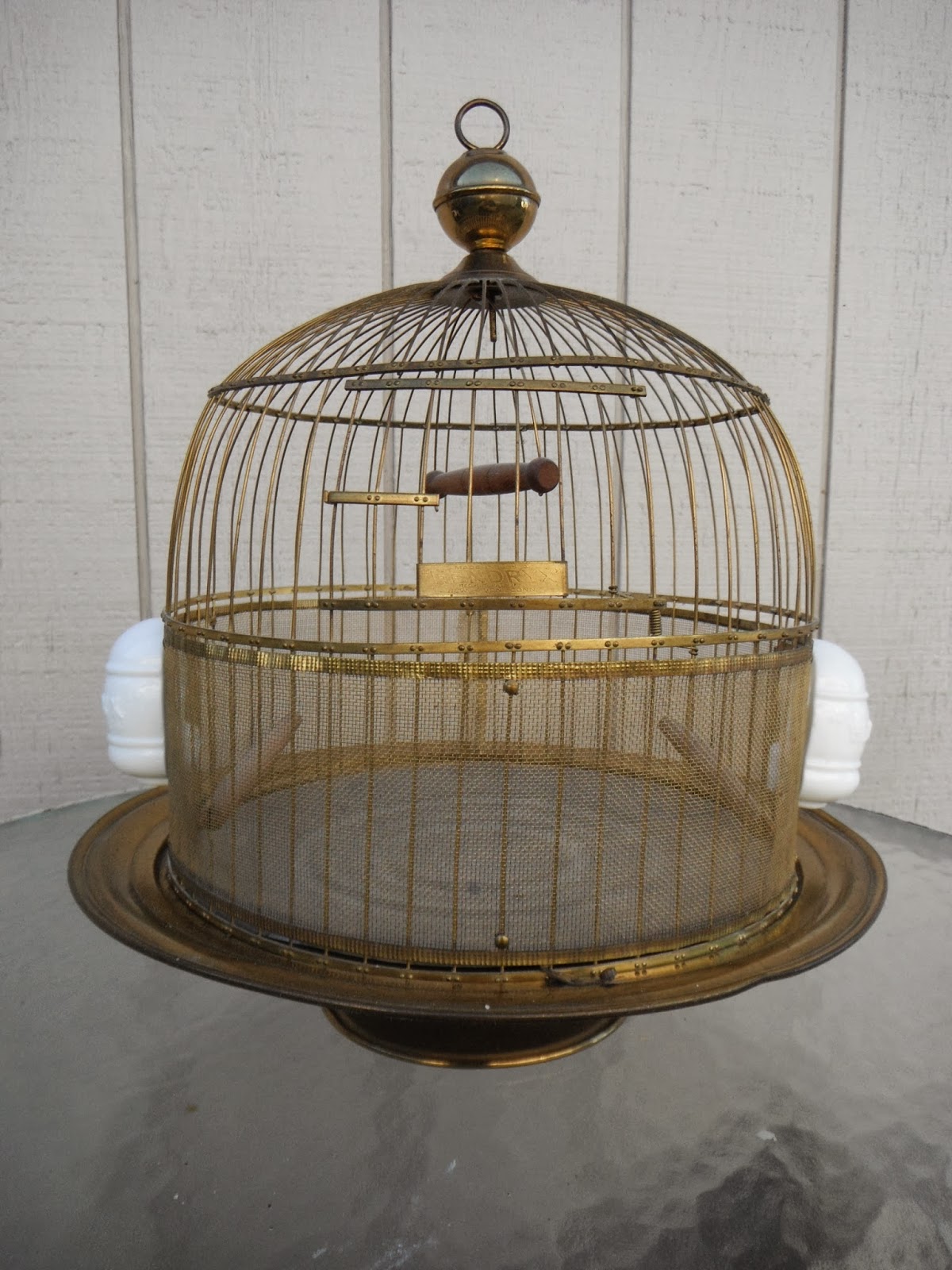









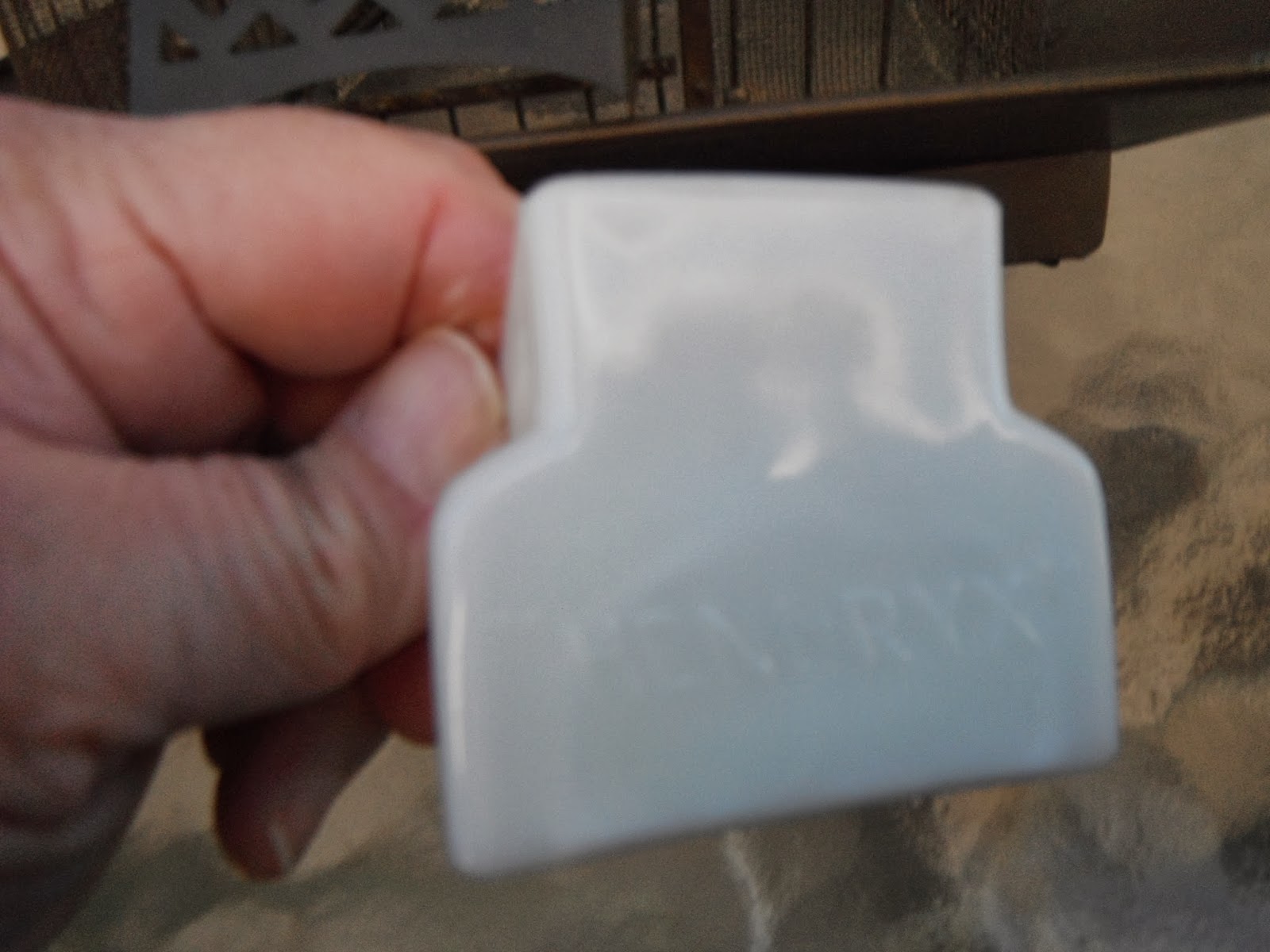
















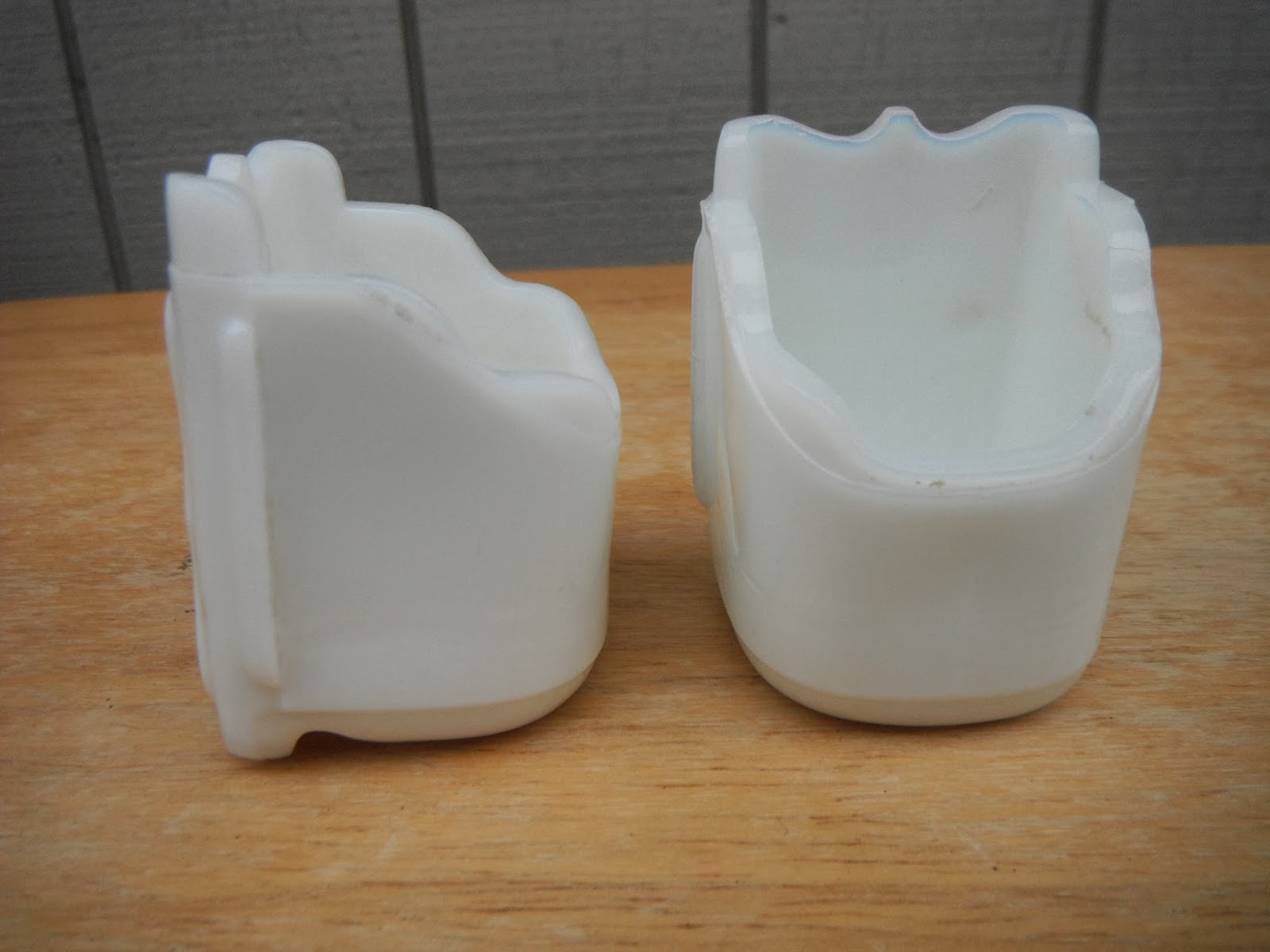





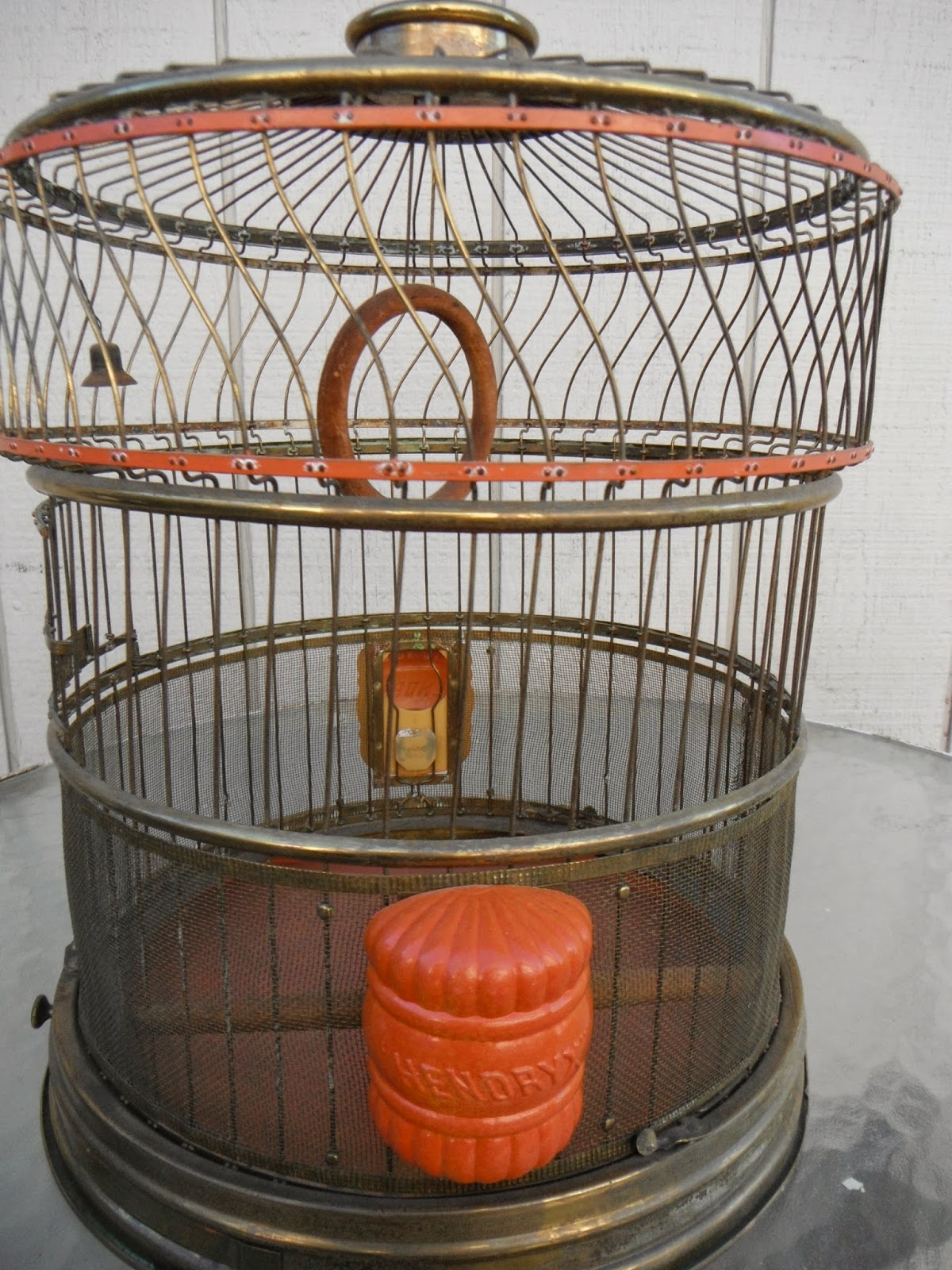








4 comments:
I didn't know much about feeders and there wasn't any literature at all out there. I going to go back through my cages and now I will be able to date them.
Thanks for another great article!
Do you by chance know what year the brass "beehive" on pedestal w/ white milkglass feeders is? I can send a photo to an email if needed. Thanks for your help!
Cindy, thank you for your note. I appreciate you reading my blog and hope it is entertaining as well as instructive. I checked my catalogs. The cage we call "beehive" Hendryx called "round brass cages". They came with a rounded top, almost straight sides, had a brass round finial with hanging loop, and sat on either a pedestal or a flat plate that almost looks like a pie plate. They had the brass wire guard, 3 brass cross rails,spring brass wires, white enameled removable mat, self-locking base hooks and the opal glass feed cups.
The 1910 catalog did not have them in it. I found the first sample of it in the 1926 catalog and it doesn't have a patent date indicated. This cage is in the 1930 catalog which is catalog #42. The next catalog, #43, is not dated but does not have the cage in it.
So...using my catalogs, the "beehive" cage was offered for sale somewhere between 1910 and the early 1930s.
I hope this information is helpful.
Thank you for writing in. If you do want to send pictures, send them to tweetthings53@gmail.com.
Barbara
I have three of the round flint glass feeder cups marked with “Hendrix”. Do they have any antique value? Do you know what year they are from?
Post a Comment